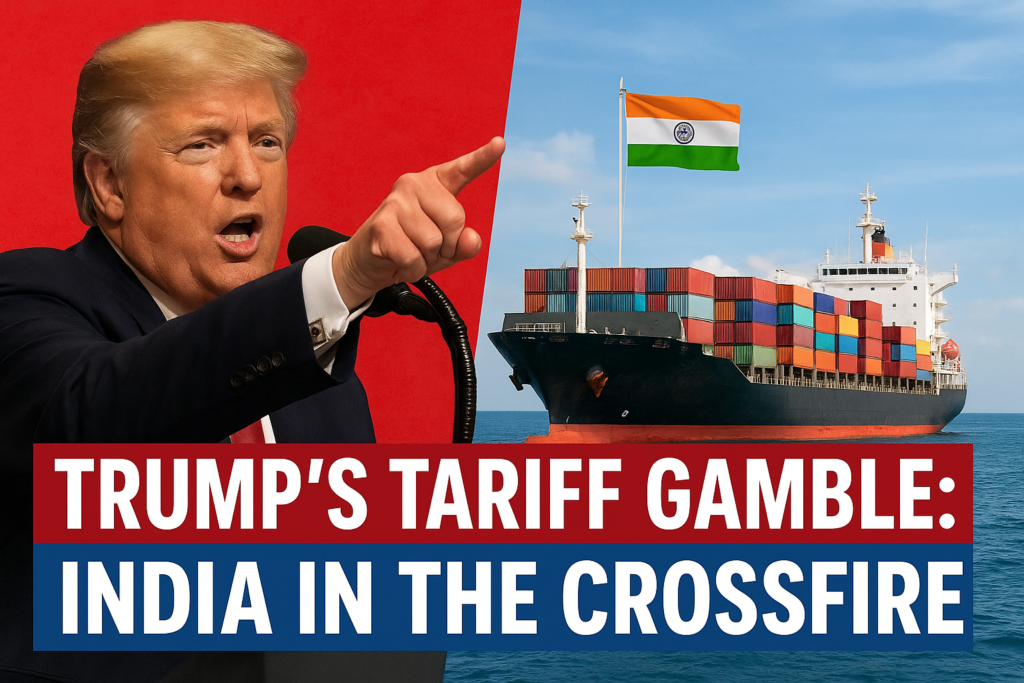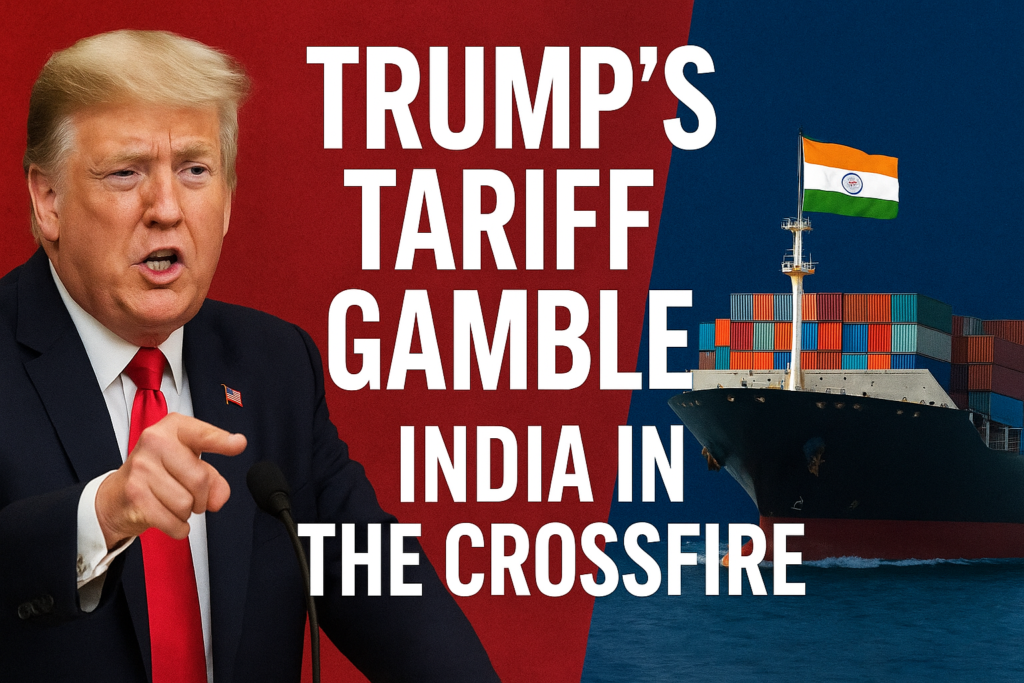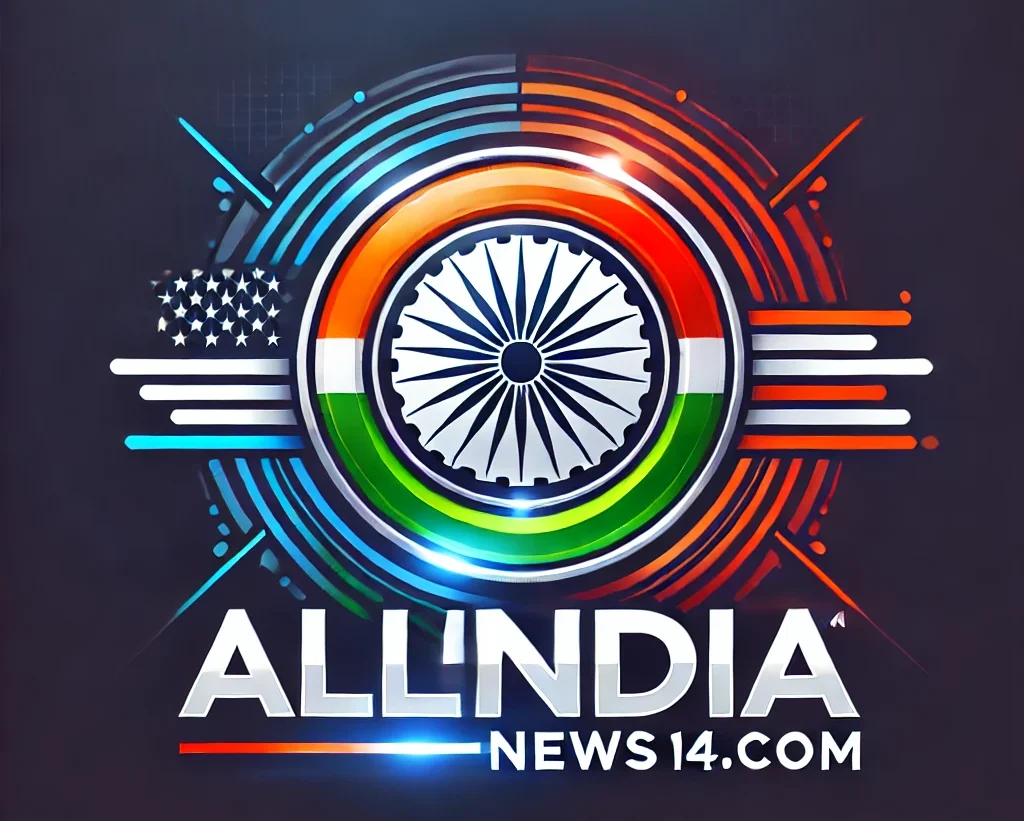Donald Trump raises tariffs on India to 50%, aiming to pressure Russia. What this means for US-India trade, diplomacy, and global politics.
Donald Trump’s Tariffs on India: A Bold Gamble to Pressure Russia
Introduction: When Trade Becomes a Weapon

Trade wars are rarely just about trade. They are about power, leverage, and the ability of one nation to bend another’s choices. On August 2025, U.S. President Donald Trump once again proved this point when he slapped steep tariffs on Indian imports, pushing duties up to 50%.
The move shocked New Delhi. At face value, it looked like a bilateral trade dispute. But as White House Press Secretary Karoline Leavitt explained, the underlying target wasn’t India at all. It was Russia.
By increasing tariffs, Trump hoped to apply “secondary pressure” on Moscow, using India’s energy ties with Russia as a lever. Yet, as history often shows, when economic weapons are unleashed, the fallout spreads much wider than intended.
Why Did Trump Target India?
India’s Oil Purchases From Russia
Since the Ukraine war began, India has emerged as one of Russia’s largest buyers of discounted crude oil. Paid partly in rupees and rubles, these deals allowed Moscow to bypass some of the harshest Western sanctions.
For Washington, this was a thorn in the side. While European allies drastically cut Russian imports, New Delhi continued filling its reserves with Russian oil. Trump’s team viewed this as an “escape hatch” that weakened the Western blockade against Moscow.
The Pressure Strategy
The logic in Washington was simple—though risky. If tariffs hurt Indian exports enough, New Delhi might rethink its reliance on Moscow. In Trump’s view, squeezing India was a way to squeeze Russia indirectly.
But critics quickly pointed out a paradox: the U.S. itself continues to import Russian uranium, essential for its nuclear power plants. To many observers, this smelled of double standards.
Economic Impact: India in the Crosshairs
Export-Heavy States at Risk
The U.S. is India’s largest trading partner. In 2024, bilateral trade crossed $120 billion. Exports to the U.S. include:
Gems and jewelry from Gujarat.
Textile and leather products from Tamil Nadu.
Pharmaceuticals from Hyderabad and Pune.
Auto parts and machinery from Maharashtra. With tariffs as high as 50%, these industries will face increased expenses, decreased demand, and possibly layoffs. Indian exporters warn of “massive disruption” if the situation continues.
Will Consumers Feel It?
Tariffs are a two-edged sword. While they harm exporters, they also increase prices for American consumers. Jewelry, apparel, and pharmaceutical imports may become more expensive in US markets.
This raises an important question: Is Trump ready to let American buyers pay more in order to achieve geopolitical goals?
Diplomatic Fallout: Cracks in a Strategic Partnership
A Friendship Under Strain
For years, India and the United States referred to themselves as natural allies. The Modi-Trump alliance was previously demonstrated in large demonstrations such as “Howdy Modi” in Houston and “Namaste Trump” in Ahmedabad.
However, those warm handshakes now seem like a distant memory. Tariffs have created friction in a relationship that was billed as one of the most crucial in the twenty-first century.
Defense Deals in Question
Reports circulated that India had put defense purchases from the U.S. “on hold.” Though the Indian government denied it, the rumor itself indicates growing distrust. Defense cooperation—including fighter jets, drones, and advanced missile systems—has long been a cornerstone of US-India relations. If trust erodes, these efforts may halt.
Voices From Washington
Peter Navarro’s Harsh Words
Peter Navarro, Trump’s trade advisor, added fuel to the fire when he slammed India’s oil deals with Russia. Calling them “opportunistic and corrosive,” Navarro warned that such moves undermined the entire U.S.–India strategic partnership.
The Shift Away From Diplomacy
Analysts believe Trump’s approach is part of a bigger pattern. Instead of traditional diplomacy, Trump is increasingly relying on economic pressure, including tariffs, sanctions, and trade restrictions, as his primary statecraft instruments.
What’s the danger? Such approaches may provide short-term influence, but they risk eroding partners’ trust over time.
Global Reactions
Markets Shrug, Oil Prices Stable
Despite the stunning announcement, oil markets barely moved. Prices remained constant, indicating that dealers assumed India will continue to buy Russian oil regardless of US taxes.
This calm response hinted at something bigger: markets don’t take Trump’s threats at full face value anymore.
China Watching Closely
Beijing, meanwhile, has been quietly watching the drama unfold. Many analysts warn that Trump’s tariff strategy could push India closer to China. Within forums like BRICS, India may find more sympathy and fewer demands.
Ironically, a move designed to isolate Russia might strengthen alternative alliances instead.
Reactions Inside India
Political Opposition Speaks Up
India’s opposition parties wasted no time. They accused the Modi government of “weak diplomacy” and failure to shield Indian exporters from U.S. aggression. Some leaders even called for retaliatory tariffs on American goods.
Public Mood: Anger and Defiance
Ordinary Indians have a belligerent attitude. Social media is crowded with hashtags like #IndiaWillNotBend and memes ridiculing Trump’s unpredictable behavior. However, business owners continue to be concerned. For them, this is more than simply politics; their livelihoods are at stake.
Long-Term Risks
Trade Wars Rarely Have Winners
History has proven that trade wars frequently harm both sides. If the tariff dispute worsens, American consumers could suffer higher prices, while Indian exporters could lose crucial market share.
Trust on the Line
Perhaps the higher expense is diplomatic. India and the United States have spent decades developing trust through defense agreements, technological cooperation, and joint military exercises. A tariff war may destroy years of development.
The BRICS Alternative
If pushed too far, India may strengthen its ties with the BRICS, seeking trade and energy stability outside the US-led system. That might change global alliances in ways Washington may later regret.
What Lies Ahead?

Negotiations are likely: Trade conflicts are noisy, but they frequently result in compromise. Backchannel discussions between Indian and American diplomats may already be begun.
High stakes for Modi and Trump: Both leaders have strong personalities. Neither wishes to appear weak. This makes speedy resolution difficult. Other countries may be watching.
If Washington can put pressure on India, could it apply similar tactics to Turkey, Brazil, or even friends like South Korea?
Conclusion: More Than Just Tariffs
Donald Trump’s tariff increase on India is more than just a trade fight. It is a geopolitical gamble—a strategy for using economics to affect the behavior of a third country, Russia.
But the consequences are complicated. India, which is proud of its strategic autonomy, is unlikely to surrender easily. American customers may bear the cost. In the bigger term, Washington risks bringing New Delhi closer to China and Russia rather than drawing it away.
One thing is certain: tariffs in today’s interconnected globe are about more than just goods. They are about power, alliances, and the fine line between cooperation and confrontation. The relationship between the United States and India, which was once praised as a cornerstone of 21st-century diplomacy, is now being tested like never before.
